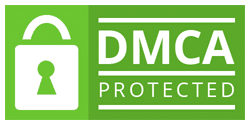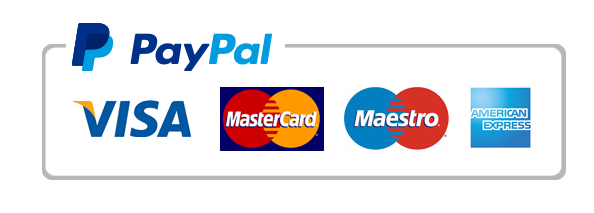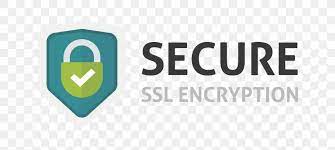4603
For an organisation of your choice, develop a strategic proposal for how the organisation could modify its strategic direction to gain significant competitive advantage from adopting a triple or quadruple bottom line strategy. Draw a direct comparison with the current strategic direction to demonstrate the shift in direction necessary and the competitive advantage to be gained from this shift.
Outcome to be submitted:
An annotated PowerPoint will suffice for submission.
Assessment Criteria
This assessment looks at your ability to:
- Select and analyse an organisation’s current sustainability position, with reference to relevant market and regulatory issues.
- Critically evaluate sustainability reporting issues for this organisation.
- Design a sustainability strategy proposal for this organisation, based on your analysis and evaluation, with reference to relevant, contemporary literature.
- Cite relevant, contemporary literature, with accurate referencing details
NOTE: Reflexive practice and cultural sensitivity are embedded in this assessment task.
*Subject Learning Outcomes
- Define and explain the principles of sustainability in a global business environment and discuss issues of future sustainability in the corporate environment
- Identify and compare market and regulatory issues relevant to sustainability at the global and local level including voluntary reporting such as the triple bottom line
- Analyse an organisation’s current position and design a sustainability strategy based on a business case for the identification and implementation of sustainability imperatives that an organisation should undertake for competitive advantage
- Critically evaluate the increased requirements for mandatory reporting, and the benefits of voluntary reporting, as well as the guidelines available and the risks associated with external reporting
**MBA Program Learning Outcomes (PLOs)
1. REFLEXIVE PRACTICE – Reflect on their practice as leaders in their context with respect to the ethical practice and standards they adhere to and how these are represented an lived through their decision-making practice and management/leadership of their team
3. LEADERSHIP IDENTITY – Develop and articulate an understanding of who they are as a leader in their field, stemming from their own personal history and that of their organisation, discipline area and cultural factors, reaching to who they aspire to be with regards to innovating their future
- CRITICAL ANALYSIS – Critically analyse problem situations to uncover the complexities of the issue at hand, and generate and evaluate a range of creative solutions to resolve the issue
- COLLABORATION – Engage in 360-degree collaboration with peers, direct reports and senior management as appropriate to achieve a performance outcome, allowing leadership to move around the group as befits the outcome
- INFLUENCE SKILLS – Articulate arguments to influence a range of diverse stakeholders utilising a range of communication media and medium as appropriate to achieve the desired outcome
- CULTURAL SENSITIVITY – Demonstrate sensitivity to cultural issues and minority interest to ensure a fully diverse range of opinions and understandings are considered when tackling
complex issues, particularly of a global nature
Marking Rubrics Assessment Criteria Fail
(Unacceptable) Pass (Functional) Credit (Proficient) Distinction (Advanced) High Distinction (Exceptional) % Points 0-49% 50-64% 65-74% 75-84% 85-100% 1. Select and analyse an organisation’s current sustainability position, with reference to relevant market and regulatory issues.
[25%] ANALYSIS Analysis lacks logical coherence; limited across key aspects of sustainability; basic information of context of selected organisation; few supporting references. Analysis lacks depth and logical coherence, but does attempt to cover key aspects of sustainability; some reference to context for selected organisation; cites several references. Mostly well-structured analysis, covers key aspects of sustainability; some reference to context for selected organisation; integrates several credible references Mostly sophisticated, and well-structured analysis, covers key aspects of sustainability; outlining context for selected organisation; integrates several credible references Sophisticated, wellstructured analysis; covers key aspects of sustainability; clearly explains context for selected organisation; integrates wide range of credible references. 2. Critically evaluate sustainability reporting
issues for this organisation. [25%] EVALUATION
Limited evaluation, with limited consideration of alternative perspectives; limited support from the literature. Some attempt at evaluation, based on consideration of multiple alternative perspectives; supported by credible references; lacks logical coherence. Adequate attempt at evaluation, based on consideration of multiple alternative perspectives; supported by credible references; mostly logically coherent. Mostly clear, logical evaluation, based on multiple alternative perspectives, well supported by credible references. Clear comprehensive evaluation based on multiple alternative perspectives; well supported by credible references 3. Design a sustainability strategy proposal for this organisation, based on your analysis and evaluation, with reference to relevant, contemporary literature.
[30%] APPLICATION Limited proposal; lacks a strong rationale; limited literature support; lacks logical coherence, with limited links to analysis and evaluation. Mostly clear, practical proposal; rationale has some literature support; mostly logically coherent, with links to analysis and evaluation. Clear and practical proposal; underpinned with strong rationale, some literature support; well structured with links to analysis and evaluation; logically coherent. Creative proposal; mostly strong evidence-based rationale; supported by literature; well structured with strong links to analysis and evaluation; logically coherent. Highly creative and engaging proposal; strong evidencebased rationale, well supported by literature; sophisticated structure, integrating analysis and evaluation.
4. Cite relevant, contemporary
literature, with accurate referencing details
[20%] REFERENCING No/ limited range of literature, with many errors in citation and the reference list. Limited range of literature, with several errors in citation and the reference list. Adequate range of literature, with some errors in the citation and reference list. Comprehensive range of literature, with few errors in citation and the reference list. Comprehensive range of literature, high levels of accuracy in citation and the reference list.
MGMT6016_Assessment_Brief_Part2_2018.docx Page 4 of 4
And also format must be:
Executive summary
Introduction
Current sustainability in KFC
Bench marking
Comparision
- Past 5 years and present
- Elements in environments which are likely to change in 5 years
- Labor markets, economic trends, market structure
Develop a strategic proposal
Conclusion
Attachments:
 MGMT6016-Asse….docx
MGMT6016-Asse….docx





